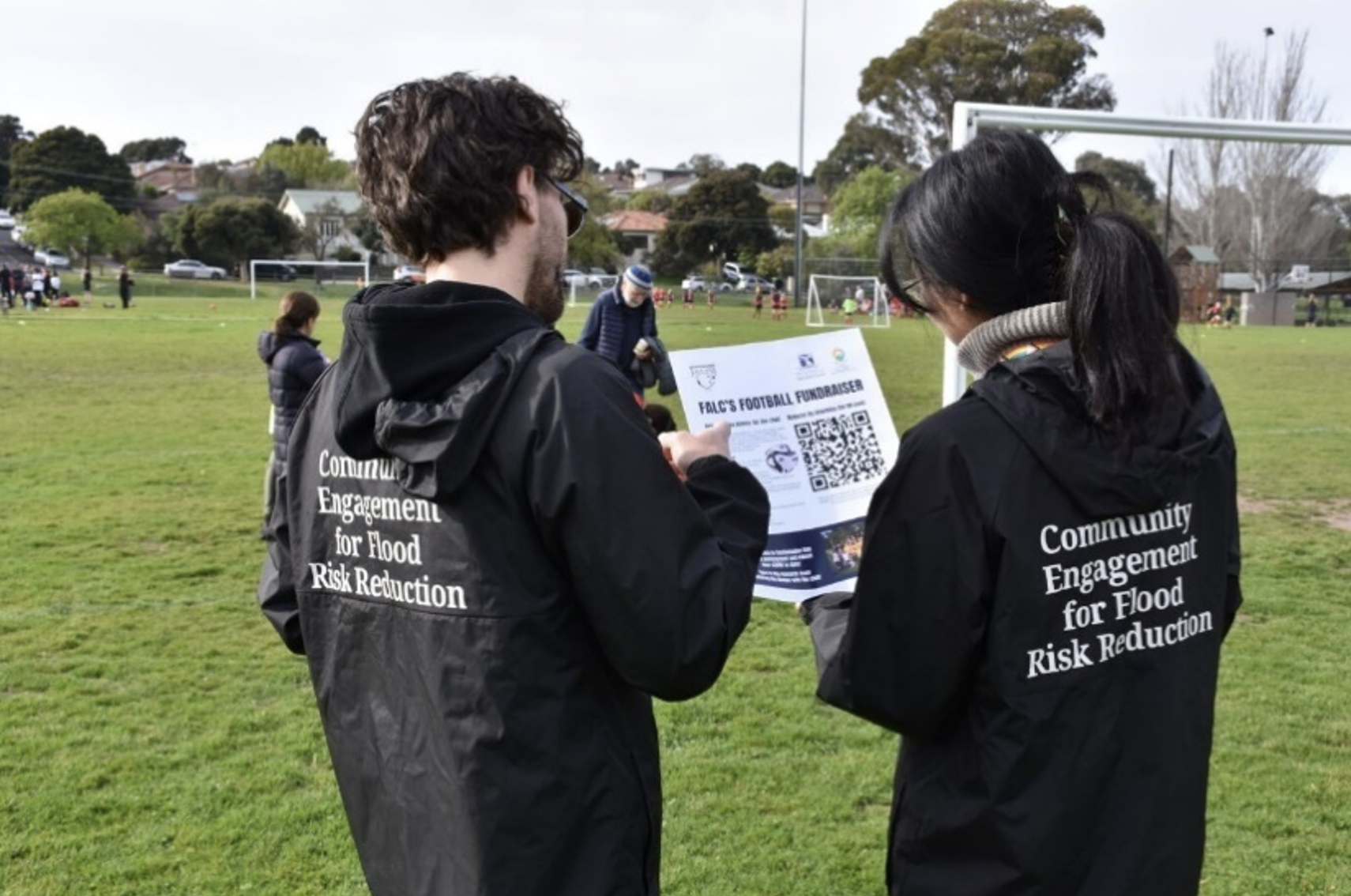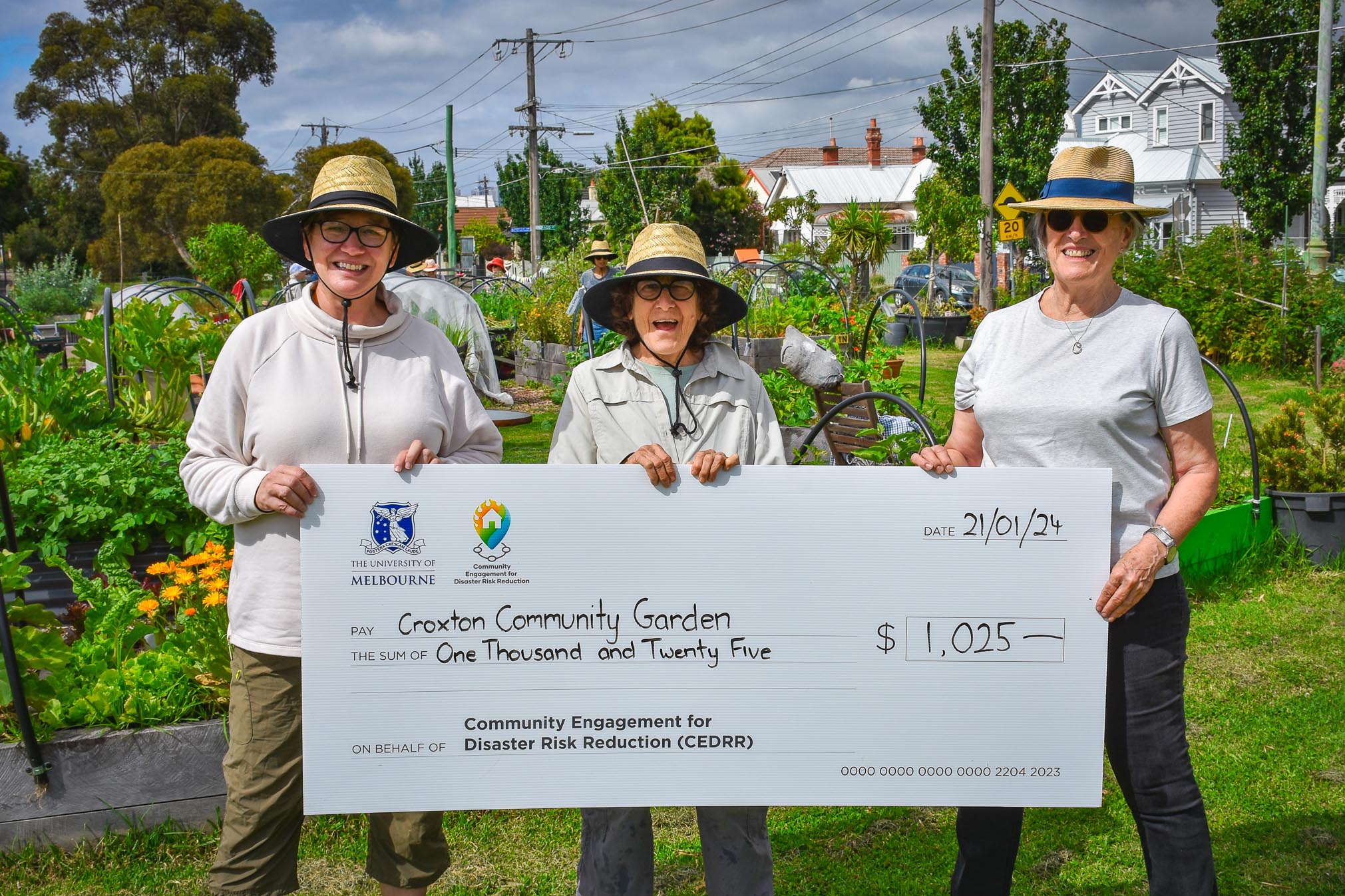Darebin Case Study: Engaging community groups
Overview
In June 2023 we began a new case study in Darebin council. In Darebin we used a door-knocking approach to participant recruitment that incentivises participation via a $25 dollar donation to one of six local and state-based charities or local community groups as a thanks for participation. When we invited participants to undertake a follow up engagement, they had another opportunity to allocate $25 to a local community group.
We also partnered with the Darebin Falcons (a club that provides opportunities for over 750 women and girls to play traditionally ‘men’s’ sports in an inclusive environment) to recruit participants. Falcon's members will earn $25 towards the club by participating in each engagement. Members of the CEDRR team attended matches to discuss the project and sign-up members to participate.

Impact
We spoke to over 1,200 residents within the Darebin Shire and spillover areas, conducting approximately 600 initial engagements and 400 follow-up engagements with community group members.
In exchange for participating, we donated $9650 to twelve community gardens and urban food relief organisations; $3475 to Foodbank Victoria; $3,330 to the Darebin Women’s Sports Club; $1850 to CERES; and $1775 to Kids First Australia. That’s over 6,660 meals to families in need; vital support for at-risk youth; new equipment for women in sport; and essential tools and training for community garden volunteers.


Preliminary Summary of Research Findings
Download the preliminary participant summary below to see more detail, and keep an eye out for more detailed findings at the end of 2026.
Overall, we found that engaging community members in our research was an enjoyable, two-way learning exercise that supports risk reduction at both the household scale. From our follow-up interviews, we found that:
- 98% enjoyed participating in CEDRR.
- 64% reported that participation increased their flood risk awareness.
- 63% reported changed intentions to reduce risk.
- 48% took action to reduce risk.
Our follow-up interviews found that the impacts of participating in this research ‘spilled over’ into participants’ wider networks and communities through conversation and action. For example:
- 76% of participants spoke to other people about CEDRR and/or the risk topics it raised.
- On average, participants discussed the engagement with three others, typically from their household, family, friends, neighbours and/or affiliated community groups.
- Collective actions saw participants help neighbours clean out gutters and drains, research flood overlays, and initiate communication channels between neighbours and local community groups.
In addition to flood risk, participants identified that they were concerned about, and taking actions to reduce risk in regard to:
- Home security.
- Personal health and safety.
- Energy and climate change.
- Financial risks.
- Food security.
The community also had fantastic feedback and suggestions for our project and the wider flood risk sector, including:
- Participants want current flood data and future flood modelling to be made publicly available.
- Participants want resources that are specifically directed at inner-city environments, rather than generic resources advice aimed across rural and urban areas.
- Participants want personalised risk-assessment services.
- Participants want greater community connection and mobilisation around risk issues.
- Participants want greater transparency and action from Council in relation to flood zones, development, and available support and grants to increase household flood resilience.
- Participants with disabilities and limited mobility need recognition and support in planning for emergencies and evacuations from high-rise buildings.
Darebin Doorknocking and Spillover Impact Visualisation, courtesy of Thomas Savige 2024
In Our Participants’ Words
“I think it's a fantastic idea. I mean, it's innovative. You know, actually talking to real people in the community is astonishingly rare. So well done… yours is actually real engagement, so that's fantastic. And we need much more of it.”
“You're offering, you know, a little bit of money to support people in their community groups. I think that's fantastic. Makes you really want to get involved with a survey like this.”
“It was informative, I didn't realise that we lived in a flood prone patch. It was stimulating in that it made me think about the implications of that. And it provoked some action on my part, I just bought a specific first aid kit… I mentioned it to a couple of people, and I got flood stories, from the local area.”
“I've learned to be aware of the risks, whether it's fire risk or floods or physical risk, whatever risks that I might face. And I'm aware of that now and how maybe to protect myself as much as I can.”
“Since I spoke to your colleague last time, is that I'm part of a WhatsApp group for the street. So, we're kind of here for each other, all the neighbours, helping each other out. I think that's helpful, you know, that if something happened, we can all kind of work to together to try and sort of deal with it.”
“If someone's having a conversation about something, I can contribute in a different way because I have that extra flood knowledge. So in that sense, I could affect change, perhaps to someone who would be thinking about doing something… So an increased awareness is a bit like a pebble in a pond. Once the pebble is in the pond, the ripples go out and you don't know where the change is actually going to be affected.”
“So this elderly lady who lives next door, I ended up arranging for her gutters to be cleaned as well, which she is very grateful about.”
Next Steps
After completing follow-up engagements in 2024, the CEDRR team is now working to analyse this data in finer detail. Keep your eye out on our publication page for research outputs focusing on the methodology, a comparison of recruitment pathways, degree of impacts resulting from engagement and exploration of spillover effects.